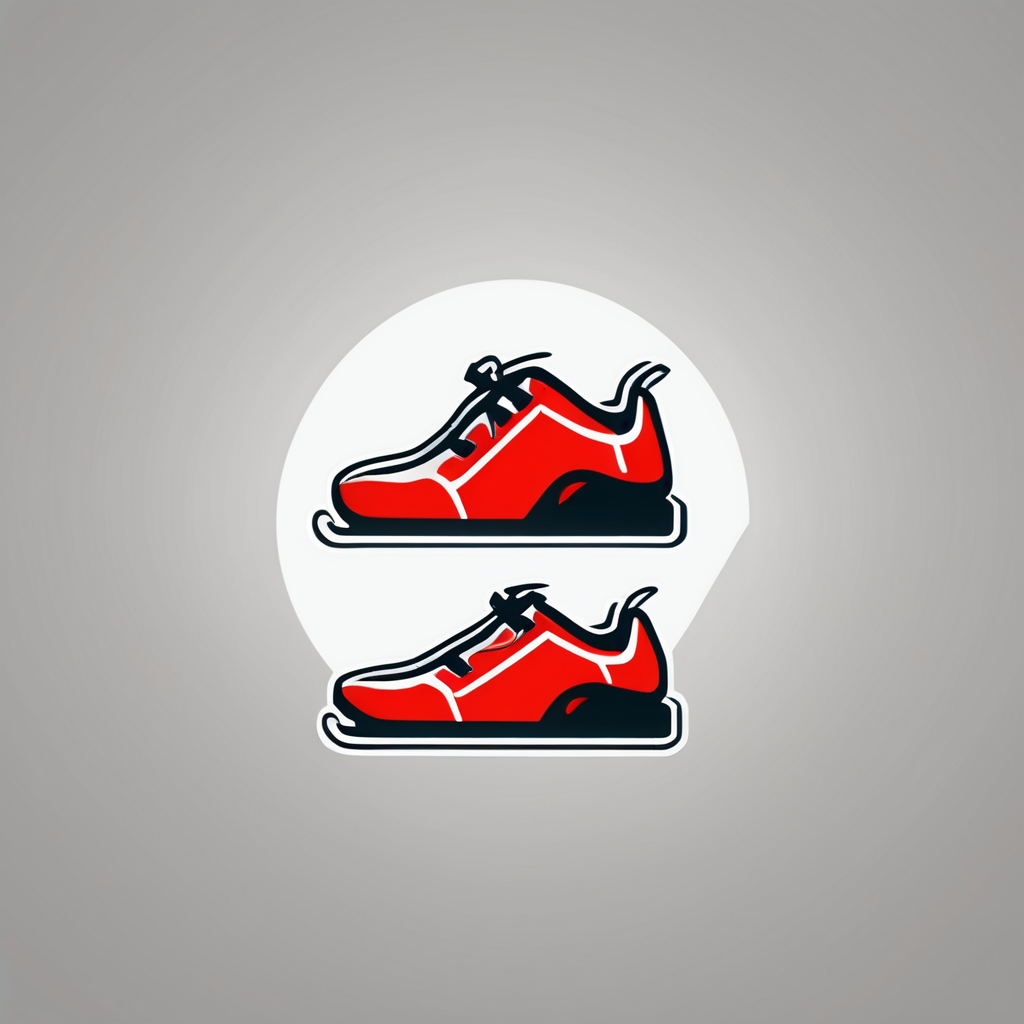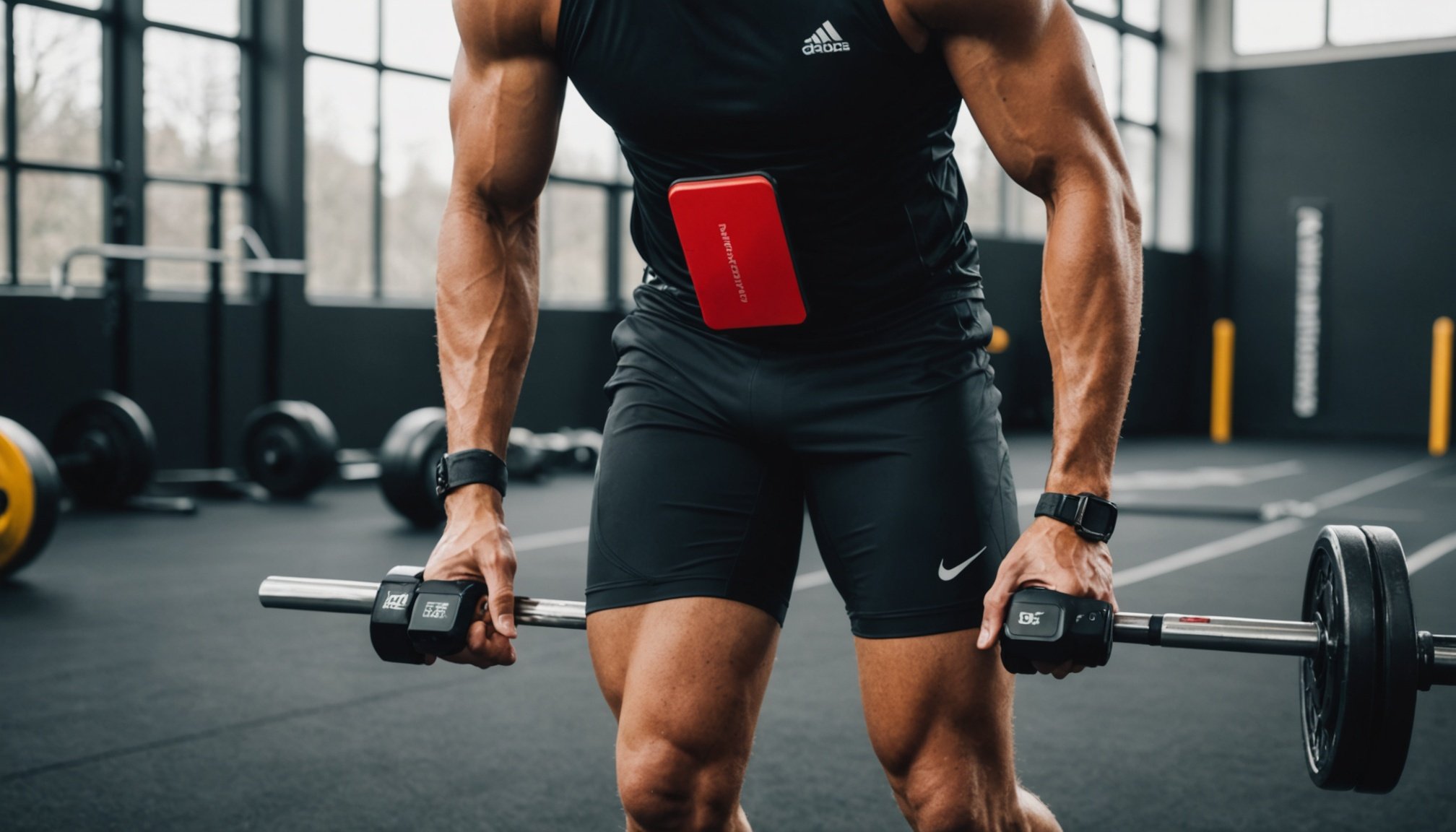Overview of Wearable Technology in Athletics
Wearable technology in athletics has revolutionized how athletes train and compete. These devices, designed to enhance training and performance, have become integral in sports science. Wearable technology initially featured basic pedometers and GPS trackers, but advancements have introduced more sophisticated devices like smartwatches and performance monitors. The evolution signifies a shift towards a more data-driven approach, where athletes and coaches rely on technology for real-time insights.
Key statistics highlight the vast adoption of wearable tech among athletes worldwide. Recent studies show an exponential increase in adoption rates, with more than 70% of professional athletes incorporating some form of wearable technology into their routines. This surge reflects the devices’ effectiveness in optimizing athletic performance.
Also read : Enhancing Athlete Excellence: How Sports Nutrition Fuels Success in Competitive Events
Popular wearable tech devices include fitness trackers, compression clothing with embedded sensors, and smart eyewear. These devices offer a range of functionalities, from tracking biometrics to providing instant feedback on form and technique. Smartwatches, renowned for their versatility, offer features like heart rate monitoring and sleep analysis, crucial for training enhancement. Performance monitors provide in-depth analysis, enabling athletes to refine techniques with precision. As wearable technology continues to evolve, it stands as a pillar in modern athletics.
Overview of Wearable Technology in Athletics
The rise of wearable technology has reshaped the landscape of athletics by providing insightful data and enhancing training practices. At its core, wearable technology refers to electronic devices that athletes wear to optimize their performance and manage their health. Initially limited to simple fitness trackers, this technology has evolved into sophisticated systems that provide detailed analytics for training enhancement.
This might interest you : Protecting Dancers: Top Conditioning Tips to Avoid Overuse Injuries
Notably, the adoption rates of these devices have surged among athletes, with studies showing that over 80% of professional athletes now incorporate some form of wearable tech into their routines. Smartwatches and chest performance monitors are among the most popular devices, offering features like heart rate monitoring, GPS tracking, and blood oxygen levels. This wealth of information helps athletes tailor their workouts and monitor their progress with precision.
Moreover, wearable technology’s evolution is driven by advancements in sensor technology and data analytics capabilities. Popular devices now enable athletes to track a wide array of metrics while providing real-time feedback. This results in more personalized training plans, essential for those striving to achieve peak performance levels. As the technology continues to evolve, its role in athletics is expected to expand, offering new ways to gain competitive advantages in sports performance.
Types of Wearable Tech for Athletes
The landscape of wearable technology for athletes is varied, offering solutions for different aspects of training and performance. Among the most popular are smartwatches, fitness trackers, and performance monitoring devices. Each of these technology types brings unique features to the athlete’s toolkit.
Smartwatches
Smartwatches are versatile tools that not only track basic activities, like steps and distance, but also integrate more sophisticated functions. For instance, they offer continuous heart rate monitoring, GPS for route tracking, and even sleep analysis. This information allows athletes to fine-tune their routines and recovery processes. Advanced models cater to diverse needs, from advanced metrics for swimmers to custom running programs.
Fitness Trackers
Fitness trackers largely focus on activity tracking and health monitoring, keeping tabs on metrics like calorie burn, heart rate, and sleep patterns. Some models include built-in coaching features, encouraging athletes towards daily fitness goals. Due to their compact design, they’re ideal for athletes who require lightweight and unobtrusive devices.
Performance Monitoring Devices
Performance monitors provide a deeper analysis of physiological data, often going beyond typical fitness measurements. These devices excel in delivering insights on biomechanics, VO2 max levels, and lactate threshold data. By collecting performance data, athletes and coaches can create highly personalized training programs, ensuring precision and targeting specific performance gains.
Benefits of Wearable Technology in Training
Wearable technology has sparked a significant shift in training methodologies due to its ability to provide real-time performance metrics and feedback. Performance improvement becomes more achievable as athletes gain immediate insights into their workout intensity, heart rate, and recovery status. This information allows for on-the-go adjustments, enhancing overall training benefits.
Moreover, an integral advantage of wearables is their capacity for injury prevention and health monitoring. Devices like smartwatches and performance monitors track indicators such as joint load and muscle strain, alerting athletes before potential injuries occur. Such preemptive data minimises downtime and ensures longer-term athlete health.
Athletes can also benefit from the ability to create customizable training regimens based on data collected by their wearables. These personalized programs are tailored to individual needs, enhancing training effectiveness and efficiency. Data-driven insights facilitate the fine-tuning of techniques and approaches, enabling athletes to target specific areas for development.
Wearable technology, through comprehensive metrics and health-focused features, empowers athletes to optimise their training regimens systematically. With wide-ranging applications, it is transforming how athletes approach training, unlocking new avenues for athletic excellence.
Types of Wearable Tech for Athletes
Diving into the array of wearable technology available today, each type serves a distinct purpose in enhancing athletic performance. Among the most popular are smartwatches, fitness trackers, and performance monitors. Each of these devices comes with unique capabilities, empowering athletes with vital insights into their training routines.
Smartwatches
Smartwatches have become a staple in the world of athletics due to their versatility. Equipped with advanced features such as GPS tracking, heart rate monitoring, and even blood oxygen sensors, they offer comprehensive data essential for optimizing athletic performance. These devices help athletes keep a precise track of their workouts, allowing quick adaptations to training regimens for improved results.
Fitness Trackers
For those seeking simplicity, fitness trackers are ideal. They excel in tracking fundamental metrics like steps taken, calories burned, and overall activity levels. While less complex than smartwatches, fitness trackers efficiently monitor daily progress, making them perfect for day-to-day athletic activities.
Performance Monitoring Devices
For athletes craving detailed analysis, performance monitoring devices are the ultimate solution. These devices provide deep, real-time data insights, focusing on specific elements such as movement mechanics and physiological responses. They are invaluable in tailoring and refining training approaches to enhance athletic prowess and ensure training enhancement. This integration of technology into sports unquestionably transforms how athletes pursue excellence.
Data Analysis and Its Role in Athletic Progress
In the realm of athletics, the integration of data analysis has become paramount for setting and achieving performance goals. Athletes and coaches rely on extensive data collection from wearable devices to track and enhance their performance. This approach provides the precise metrics necessary to fine-tune training regimens, ensuring every workout is aligned with achieving peak athletic potential.
For instance, consider the case of Athlete X, who experienced a remarkable boost in their marathon time by utilizing data-tracking tools. By analysing metrics like heart rate and stride frequency, the athlete modified their training to improve endurance and efficiency. Such performance tracking isn’t limited to professional athletes; weekend warriors can equally benefit by understanding which aspects need improvement.
Several tools and platforms are now available to assist athletes in this data-driven journey. Advanced software applications can aggregate data from various wearable tech gadgets, offering a comprehensive view of an athlete’s progress. These platforms often feature training optimization tools, which suggest adjustments to routines based on interpreted data.
Ultimately, the role of data analysis in athletic progress amplifies the potential for performance breakthroughs. By embracing these technological advancements, athletes are better equipped to meet their training objectives efficiently and innovatively.
Data Analysis and Its Role in Athletic Progress
Wearable technology’s advancement has ushered in an era where data analysis profoundly impacts athletic performance. At the core, data analysis in sports involves evaluating various performance metrics gathered from wearable devices. This process enables athletes to set realistic goals and develop strategies that enhance their overall training optimization.
Athletes can leverage comprehensive performance tracking data to refine their techniques and approaches. By examining patterns over time, they identify strengths and areas needing improvement. Key tools and platforms provide a centralized hub for this data, supporting informed decision-making processes.
Through case studies, the practical benefits of data-driven training become evident. For example, athletes who adjust workouts based on real-time feedback often witness significant gains in performance and efficiency. Furthermore, data analysis enables precise adjustments, ensuring training regimens are not only effective but adaptive.
Emerging technologies further enhance data utilization in sports. Platforms that integrate data analysis offer dashboards visualizing detailed metrics, empowering athletes and coaches to tailor strategies. Through these insights, athletes have the opportunity to surpass previous performance levels.
In the realm of sports, data harnessed from wearable technology serves as a pivotal force, driving progress and enabling athletes to achieve greater milestones in their athletic journey.
Case Studies of Successful Wearable Tech Integration
Exploring success stories in wearable technology highlights how athletes leverage these devices for enhanced performance. Professional athletes, such as marathon runners and cyclists, serve as examples of how wearables can transform training. By integrating data from devices like smartwatches and performance monitors, athletes experience significant improvements.
In one notable case study, an elite swimmer utilised a combination of smart goggles and performance monitors to refine stroke technique and optimise training regimens. This approach led to considerable gains in speed and efficiency, ultimately securing podium finishes in international competitions. Similarly, a professional cyclist used fitness trackers to monitor heart rate and cadence, adjusting training plans in real-time and achieving personal bests more consistently.
Lessons learned from these experiences emphasise the value of personalised, data-driven training. Athletes often report feeling more in control of their progress, with wearables providing clear indicators of successes and areas for improvement.
Wearable technology not only quantifies performance but also motivates athletes to reach higher goals. As more athlete experiences affirm the benefits, the integration of tech becomes a staple for those aiming for peak performance. These case studies validate wearables as indispensable tools in modern athletics.
Case Studies of Successful Wearable Tech Integration
In the world of athletics, wearable technology case studies offer valuable insights into how athletes are maximizing their potential. By examining success stories, we can uncover the practical applications of wearable tech in enhancing performance. One such case is that of professional triathlete Sarah, who integrated wearable devices into her routine. Equipped with a smartwatch and performance monitor, Sarah combined real-time training data with her coach’s feedback. This enabled her to adjust her regimen dynamically, resulting in significant improvements in her transition times and overall endurance.
Another example is Olympic sprinter Alex, who utilized fitness trackers to monitor recovery. By analysing biometric data, Alex was able to modify his sleep patterns and nutrition, tailoring his recovery strategies more effectively. The result was a notable reduction in injuries and increased competition readiness.
Lessons from these experiences underscore the versatile benefits of wearables in diverse sports settings. For instance, well-implemented wearable tech solutions can provide personalized insights, allowing athletes to make informed decisions about their training strategies. By studying such case studies, both amateur and professional athletes can glean strategies for successful wearable tech integration. This highlights the transformative potential of these technologies in modern sports science and training methods.
Future Trends in Wearable Technology for Athletes
The evolution of wearable technology continues to reshape the landscape of athletic training, driven by rapid innovations in the field. Looking forward, several key trends are set to influence how athletes harness these technologies for training enhancement and athletic performance gains.
Artificial Intelligence (AI) and machine learning are at the forefront of this technological progression. Integrating these advancements allows wearables to offer predictive insights, helping athletes predict potential injuries and adjust their workload accordingly. Such foresight could revolutionize athlete recovery and prevent overtraining.
Emerging technology trends also include increasingly miniaturized and non-intrusive devices, which provide comprehensive data without hindering workout sessions. As developers strive for seamless user experiences, athletes will likely see improvements in comfort and data accuracy.
Additionally, augmented reality (AR) integrations are promising to offer more immersive coaching experiences. AR could enable virtual coaching environments, providing athletes with real-time visual feedback on techniques and strategies.
The connectivity of different devices is expected to enhance, allowing for a more integrated approach to training and health management. As wearables evolve, there is potential for unprecedented personalization in training plans and insights, fundamentally altering how athletes approach and achieve peak performance.
Future Trends in Wearable Technology for Athletes
The world of wearable technology is constantly evolving, promising exciting future trends aimed at enhancing athletic performance. Emerging innovations are set to revolutionize how athletes train and compete, with a strong emphasis on leveraging AI and machine learning. These technologies have the potential to offer even more precise training feedback and real-time optimization of performance metrics.
One significant trend is the integration of AI algorithms, which can analyze data patterns to provide personalized coaching tips. This advancement means wearables can adapt to an athlete’s unique biology and habits, offering insights that are specific and actionable. Moreover, AI-driven features can aid in predicting injuries by analyzing biomechanical data, allowing for preventive measures.
The accessibility of performance monitors is likely to increase, making advanced analysis tools available to both professional and amateur athletes. This democratization will foster an environment where everyone can access sophisticated performance tracking.
Wearable technology’s evolving nature extends to improved sensor accuracy and battery life, enabling longer and more accurate data collection periods. These technological advancements will pave the way for new applications in sports training, offering unprecedented opportunities for athletes to reach new heights. As innovation continues, the possibilities for enhancing athletic training practices are virtually limitless.
Comparing Different Wearable Tech Products
Navigating the world of wearable technology for athletic performance can be daunting given the vast array of options available. Understanding the distinct features and suitability for training enhancement can help athletes make informed choices.
Top Products on the Market
Several wearable technology products stand out for their advanced features and reliability. Top on the list are smartwatches, such as the Apple Watch Series 8, known for its precise athletic performance metrics and intuitive interface. Garmin Forerunner 945 caters to endurance athletes with its emphasis on GPS and long battery life. For those interested in fitness trackers, the Fitbit Charge 5 offers robust health-monitoring capabilities.
Pros and Cons of Each Device
- Apple Watch Series 8: Offers seamless integration with iOS devices and comprehensive health tracking. However, its relatively short battery life may be limiting for long-distance athletes.
- Garmin Forerunner 945: Excels in GPS accuracy and training analytics, but may present a steeper learning curve for inexperienced users.
- Fitbit Charge 5: Ideal for everyday fitness tracking with an excellent sleep analysis feature, though its focus is more casual compared to performance-specific devices.
Price and Accessibility Comparison
Price points vary, with the Apple Watch Series 8 and Garmin Forerunner 945 positioned in the higher range, while the Fitbit Charge 5 remains more affordable. Consider training enhancement needs and budget constraints when choosing the best device.
Comparing Different Wearable Tech Products
Understanding the landscape of wearable tech products in athletics can inform choices that optimise athletic performance. This section evaluates top contenders to guide athletes in their selection process.
Top Products on the Market
The market offers a host of innovative devices. Leading the pack, smartwatches like the Apple Watch and Garmin Forerunner are celebrated for versatile features including training enhancement tools. Fitness trackers, such as the Fitbit Charge, provide efficient health monitoring. Performance monitors, like the WHOOP band, are renowned for their detailed analytical capabilities.
Pros and Cons of Each Device
- Smartwatches: Highly versatile with metrics for various sports; some models are costly.
- Fitness Trackers: Affordable and easy to use; may lack advanced features.
- Performance Monitors: Offer comprehensive data analysis; can be expensive and require technical know-how.
Price and Accessibility Comparison
Pricing varies, with fitness trackers typically offering the most accessible entry point, often below $200. Smartwatches and performance monitors trend higher, reflecting their sophisticated features. Accessibility is generally wide, with availability through major retailers and online platforms.
Selecting the right wearable involves weighing personal athletic goals against price sensitivity. Athletes benefit from devices that align with specific needs, offering a balance between comprehensive data analytics and budget considerations.
Future Trends in Wearable Technology for Athletes
In the realm of wearable technology, the future promises exciting advancements poised to transform athletic performance and training practices. As innovations continue to evolve, athletes stand to benefit from cutting-edge developments designed to enhance their capabilities.
A significant trend on the horizon is the integration of artificial intelligence (AI) and machine learning. These technologies hold the potential to provide more precise, real-time optimization of training metrics. AI can analyze complex data patterns to offer tailored coaching insights, automatically adjusting to an athlete’s unique physiology and performance levels.
Moreover, the emergence of augmented reality (AR) in wearables opens doors to immersive training experiences. With AR, athletes could access visual coaching aids in real-time, enhancing technique and strategy without requiring physical coaches.
In addition, the trend towards miniaturized, non-intrusive devices ensures athletes can train without disruption. These compact wearables are designed to meld seamlessly with athletic routines, providing comprehensive data without burdening the user.
Ultimately, these trends promise to democratize advanced training tools, making them accessible to athletes at all levels. The continued advancement in technology will likely redefine the boundaries of athletic performance, making the pursuit of personal bests more achievable than ever.
Comparing Different Wearable Tech Products
Navigating the diverse landscape of wearable technology for athletic performance requires careful consideration of each product’s features and benefits. Understanding how these devices enhance training enhancement can guide athletes in making informed decisions.
Top Products on the Market
Key players in wearable technology include smartwatches, fitness trackers, and performance monitors, each with unique strengths. The Apple Watch Series 8 excels in athletic performance analytics, providing seamless connectivity and comprehensive health insights. For endurance athletes, the Garmin Forerunner 945 stands out with its robust GPS capabilities and extended battery life. Another notable option is the Fitbit Charge 5, known for its user-friendly health-monitoring functions.
Pros and Cons of Each Device
- Apple Watch Series 8: Known for its advanced features, it’s perfect for tech-savvy users seeking a comprehensive health ecosystem, though limited by short battery life.
- Garmin Forerunner 945: Offers excellent navigation and durability, but may be complex for beginners.
- Fitbit Charge 5: An affordable choice for daily fitness tracking, ideal for users focusing on health, although it lacks specialized athletic features found in higher-end devices.
Price and Accessibility Comparison
The Apple Watch Series 8 and Garmin Forerunner 945 are premium choices, whereas the Fitbit Charge 5 is budget-friendly, making it accessible to a wider audience.






